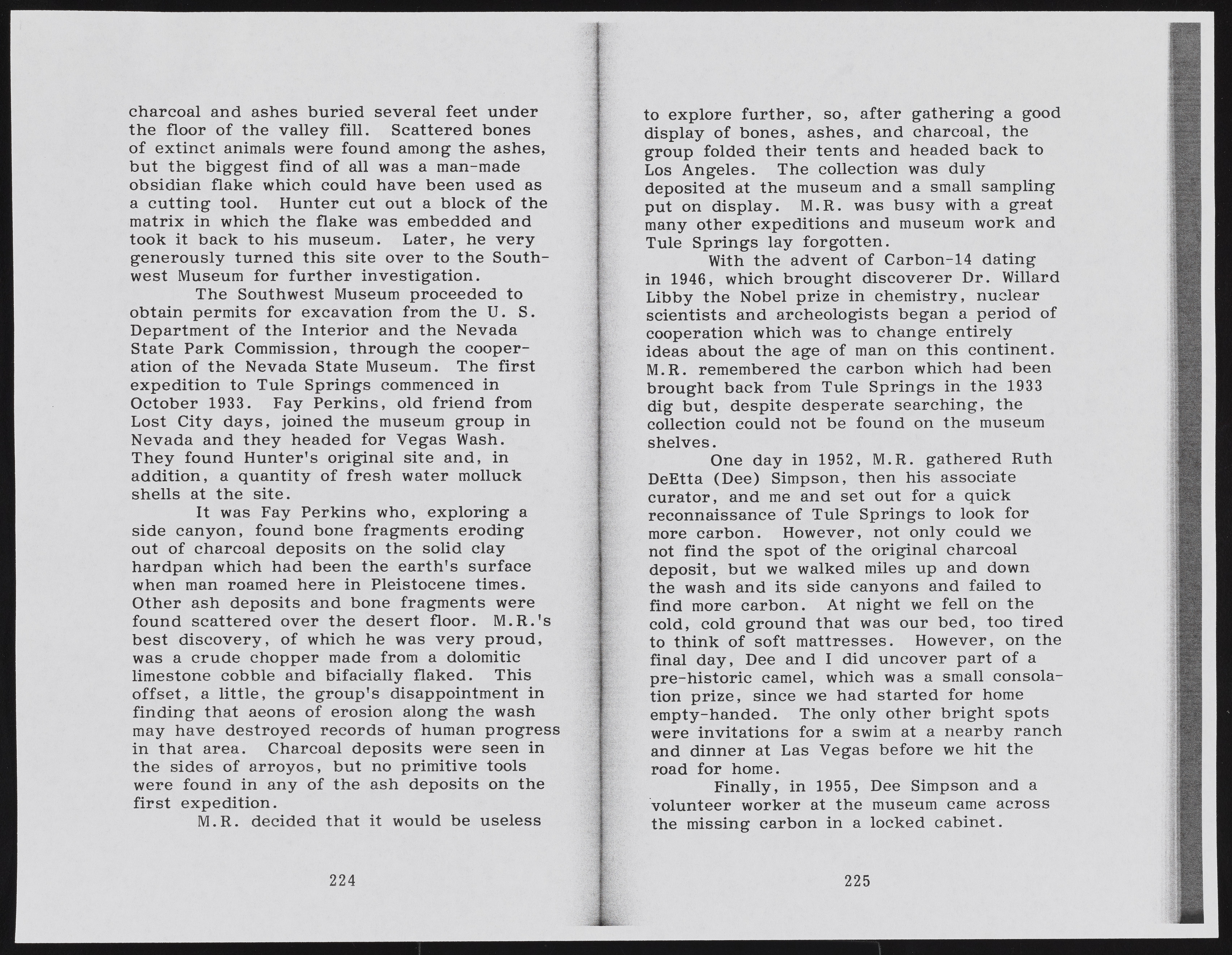Copyright & Fair-use Agreement
UNLV Special Collections provides copies of materials to facilitate private study, scholarship, or research. Material not in the public domain may be used according to fair use of copyrighted materials as defined by copyright law. Please cite us.
Please note that UNLV may not own the copyright to these materials and cannot provide permission to publish or distribute materials when UNLV is not the copyright holder. The user is solely responsible for determining the copyright status of materials and obtaining permission to use material from the copyright holder and for determining whether any permissions relating to any other rights are necessary for the intended use, and for obtaining all required permissions beyond that allowed by fair use.
Read more about our reproduction and use policy.
I agree.Information
Digital ID
Permalink
Details
More Info
Rights
Digital Provenance
Publisher
Transcription
charcoal and ashes buried several feet under the floor o f the valley fill. Scattered bones o f extinct animals were found among the ashes, but the biggest find o f all was a man-made obsidian flake which could have been used as a cutting tool. Hunter cut out a block o f the matrix in which the flake was embedded and took it back to his museum. Later, he v e ry generously turned this site over to the Southwest Museum for further investigation. The Southwest Museum proceeded to obtain permits for excavation from the U. S. Department o f the Interior and the Nevada State Park Commission, through the cooperation o f the Nevada State Museum. The first expedition to Tule Springs commenced in October 1933. Fay Perkins, old friend from Lost City days, joined the museum group in Nevada and they headed for Vegas Wash. Th ey found Hunter's original site and, in addition, a quantity o f fresh water molluck shells at the site. It was Fay Perkins who, exploring a side canyon, found bone fragments eroding out of charcoal deposits on the solid clay hardpan which had been the earth's surface when man roamed here in Pleistocene times. Other ash deposits and bone fragments were found scattered over the desert floor. M .R .'s best discovery, o f which he was v e ry proud, was a crude chopper made from a dolomitic limestone cobble and bifacially flaked. This o ffset, a little, the group's disappointment in finding that aeons o f erosion along the wash may have destroyed records o f human progress in that area. Charcoal deposits were seen in the sides o f arroyos, but no primitive tools were found in any o f the ash deposits on the first expedition. M.R. decided that it would be useless 224 to explore fu rth er, so, after gathering a good display o f bones, ashes, and charcoal, the group folded their tents and headed back to Los Angeles. The collection was duly deposited at the museum and a small sampling put on display. M.R. was busy with a great many other expeditions and museum work and Tule Springs lay forgotten. With the advent of Carbon-14 dating in 1946, which brought discoverer Dr. Willard Libby the Nobel prize in chemistry, nuclear scientists and archeologists began a period of cooperation which was to change entirely ideas about the age of man on this continent. M.R. remembered the carbon which had been brought back from Tule Springs in the 1933 dig but, despite desperate searching, the collection could not be found on the museum shelves.O ne day in 1952, M.R. gathered Ruth DeEtta (D ee) Simpson, then his associate curator, and me and set out for a quick reconnaissance o f Tule Springs to look for more carbon. However, not only could we not find the spot o f the original charcoal deposit, but we walked miles up and down the wash and its side canyons and failed to find more carbon. At night we fell on the cold, cold ground that was our bed, too tired to think o f soft mattresses. However, on the final day, Dee and I did uncover part o f a pre-historic camel, which was a small consolation prize, since we had started for home empty-handed. The only other bright spots were invitations for a swim at a nearby ranch and dinner at Las Vegas before we hit the road for home. Finally, in 1955, Dee Simpson and a volunteer worker at the museum came across the missing carbon in a locked cabinet. 225

